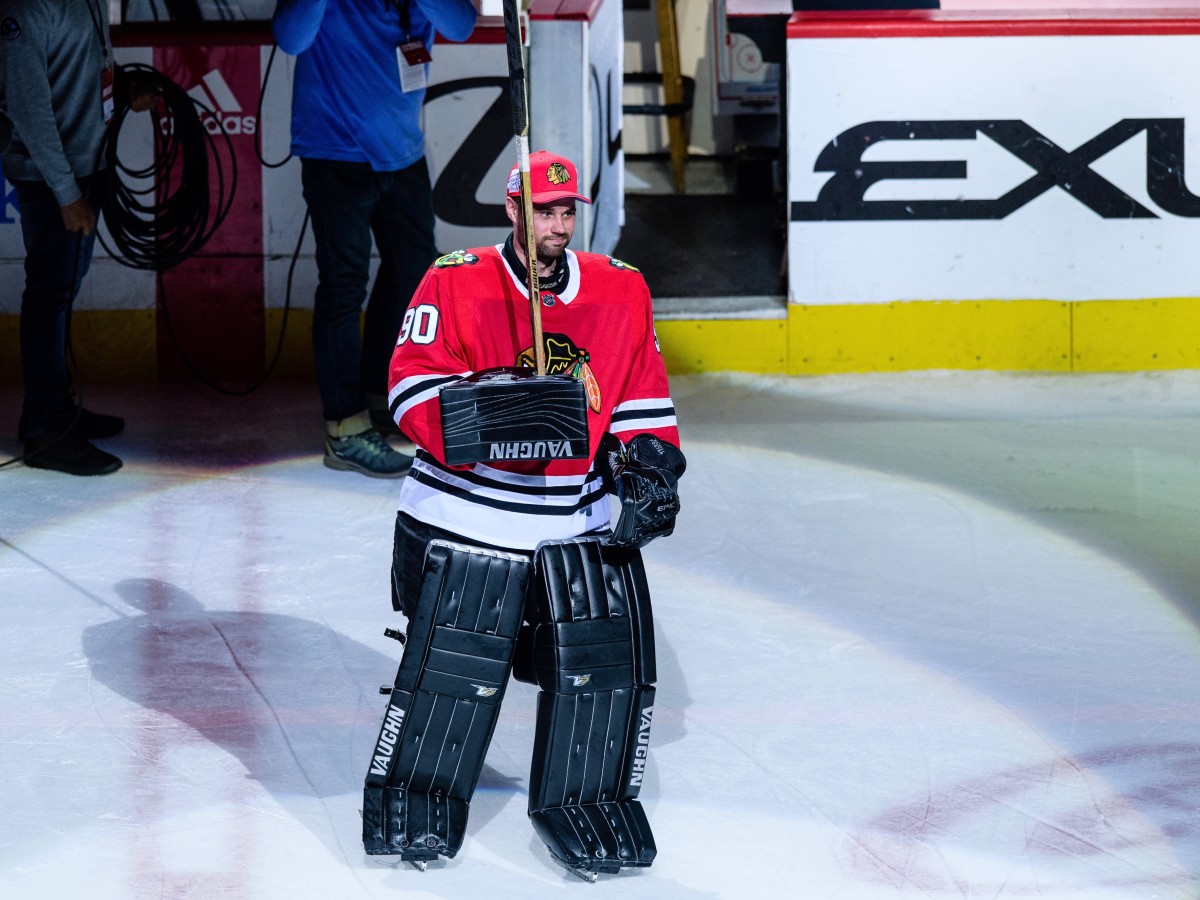How to Create a 'Scott Foster' Rule for MLB: Let a Civilian Be the Emergency Catcher

On Thursday evening, Scott Foster was an Oak Park, Ill. accountant and recreational hockey goalie whose last competitive action came during his senior year at Western Michigan University in 2005-06. By the time the Chicago Blackhawks finished their 6–2 win over the Winnipeg Jets on Thursday night, Foster had made his NHL debut, stopped seven shots and allowed zero goals in 14 minutes of action. A codicil in the NHL collective bargaining agreement specifies that an emergency goalkeeper can enter a game for either team in the event that both active goalies get injured. On Thursday, the Blackhawks lost starting goalie Anton Forsberg to injury in warmups and backup Collin Delia, who was making his NHL debut, with 14 minutes remaining. That forced Foster, who finished his day as an accountant just hours earlier, to finish the game. Now, Foster is the talk of the sports world and an instant folk hero.
The emergency backup goalie rule usually puts unsuspecting people—coaches who were once NHL goalies, former professionals—into the thrilling if terrifying scenario of entering a NHL game. Foster's perfect outing assures that he'll finish his NHL career with a 1.000% save percentage.
So would this be possible in baseball? It would. Enter the emergency backup catcher.
All teams carry two active catchers. Managers try not to remove the starting catcher from the game because they can't be re-entered. That means if the backup catcher is injured, a position player or pitcher must serve as the catcher—the most physically demanding and specific position on the field. Managers are usually happy to let position players pitch in the event of a blowout or long extra-inning game, but not catch. That often leads to starting catchers playing every inning of long extra-inning games, an unnecessary strain during a 162-game season.

That's why Major League Baseball should allow a civilian to enter a game in the event that one team loses two catchers. Here's how it should work.
- An emergency catcher is named for every game the same way an extra umpire is listed. The catcher must have played at the collegiate or professional level or played in a highly competitive recreational league within the past thee years. He must be cleared by an independent MLB evaluator and determined physically fit for action. He's available to either team.
- The catcher is only required to defend. The manager has the option to hit for the catcher, who won't lose his eligibility, if there are available reserves. If there are no available reserves, the catcher has to hit for himself. The manager is free to let the emergency catcher hit for himself if there are available reserves.
- The catcher is allowed at least 10 warmup pitches and multiple throws down to second base. Allow him time to warm up.
- The emergency catcher can also be a coach or staff member if the team elects to exercise that option.
There are inherent flaws in the plan. The flaws are not enough to discourage implementing this rule.
- If a runner were to get on base, the hitting team would stand a strong chance of stealing a base. That's hardly different from the emergency goalie being more susceptible to allowing a goal than an everyday NHL player. This is an emergency scenario after all. Plus, wouldn't the manager rather keep players on his everyday roster healthy than potentially catch a base-stealer? Also, imagine if the emergency catcher threw a prospective base-stealer out? It would be the highlight of the year.
- The emergency catcher will almost certainly have one passed ball because he won't be used to big league breaking balls and offspeed pitches. The above principle applies: Wouldn't you rather a civilian have a passed ball over one game of a 162-game season instead of risking the health of a position player?
- You might get a chance to see a civilian face a big league pitcher. The likelihood of the civilian making contact is extremely low ... but maybe he would! It would be a fantastic way to bring some excitement to a very long and often boring baseball regular season. If you asked a civilian if they'd risk injury to appear in a Major League game, my guess is that they'd say they yes.
I say do it. Unlike the NBA or NFL, baseball is a game that could conceivably make space for a civilian in an emergency situation. It's a better option than risking injury to a position player so he can catch or straining an already-injured or exhausted catcher. Imagine 59-year-old Mike Scioscia trying to back-pick a baserunner or an old collegiate catcher legging out an infield single. In the proverbial dog days of summer, it would be a welcome moment for a sport yearning for more attention.
And then baseball would have its own Scott Foster, a folk hero whose name won't soon be forgotten.
